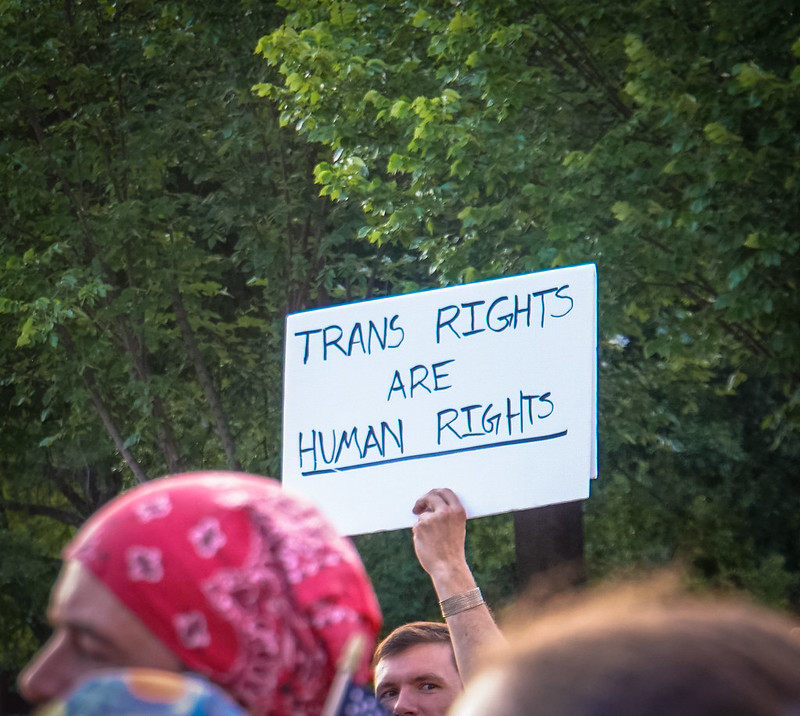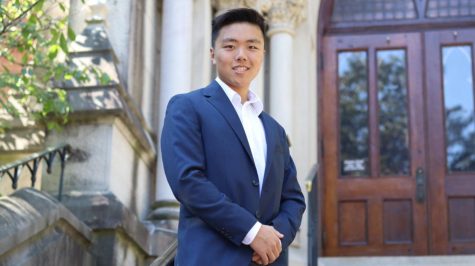OP-ED: Joe Biden’s Transgender Policy Creates an Unfair Playing Field
April 30, 2021
COVER IMAGE COURTESY OF TED ETYAN/FLICKR, PROVIDED BY CREATIVE COMMONS LICENSE
Within its first month, the Biden Administration has passed a flurry of executive orders and policies in an effort to curb transgender discrimination. On Jan. 20th, Joe Biden signed Executive Order 13988 on Preventing and Combating Discrimination on the Basis of Gender Identity or Sexual Orientation. Additionally, the Biden Administration withdrew government support from a notable Connecticut lawsuit on Feb. 24th, which aimed to ban transgender athletes from competing in girls high school sports. The moves stirred up a long standing debate surrounding women’s sports and transgender athletes.
Connecticut is one of 18 states to allow high school transgender athletes to compete with their gender identity, without any medical or legal intervention in hormone replacement therapy. Andraya Yearwood, a transgender sprinter, gained notable media attention after finishing second at the 2017 Connecticut Interscholastic Athletic Conference (CIAC) finals in the 100-meter dash, only behind another transgender sprinter Terry Miller. Complaints made by several female track athletes in response resulted in the May 2020 lawsuit filed by the U.S. Education Department’s Office for Civil Rights, overseen by the Trump Administration.
In a 45-page letter, the Office for Civil Rights threatened to withhold funding over Connecticut’s policy, finding it a violation of Title IX, a federal civil rights law that guarantees equal educational opportunities for women. Under Biden’s new executive order, however, no state can create laws to ban transgender athletes from competing in government-funded organizations, such as high school athletics.
Lawyers for Miller and Yearwood argued that both athletes were undergoing hormone treatment at the time of competition, allegedly putting them at equal competition as their opponents. Current NCAA rules have similar guidelines – a transgender athlete seeking to compete in the NCAA is required one year of hormone treatment prior to competing on a female team.
However, scientific studies have shown that hormones are not the only deciding factor in creating a fair playing field for transgender and cisgender athletes. In a study published in the British Journal of Sports Medicine, researchers found that one-year hormonal transition treatment is inadequate in dismantling a competitive edge. The study’s lead author, Dr. Timothy Roberts, noted that trans women still have an advantage over cis women. Only after two years of treatment do the differences between trans and cis women disappear.
The Biden Administration, however, pays little regard for these scientifically noted differences. Instead, the Administration has dismissed all previous studies, allowing publicly-funded organizations to freely allow transgender athletes, regardless of the athlete’s transition stage.
This blatant denial of science is not new. Activist groups, such as the ACLU, have denied the biological advantages transgender athletes have before the proven two-year transitionary mark. Echoing the Biden administration’s executive order, the ACLU has also repeatedly pushed the narrative that trans athletes belong on the same teams as other students, instead of creating a separate category. Yet the ACLU does not make clear why separating a group of biologically different athletes is in conflict with providing “a caring environment where teammates are supported by each other and coaches.”
While the NCAA and the Olympics do recognize a biological difference between cis and trans athletes, Joe Biden’s executive order shortcuts the process of fair competition. It is true that after a prolonged period of transition time, the biological differences do disappear. However, this executive order forgoes this transition period and creates a difficult situation for both transgender and cis female athletes alike.
This is not an argument for the exclusion of transgender athletes from competitions. Rather, it uses basic biology and scientific research to find common ground and construct an even playing field.








